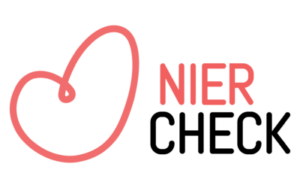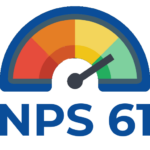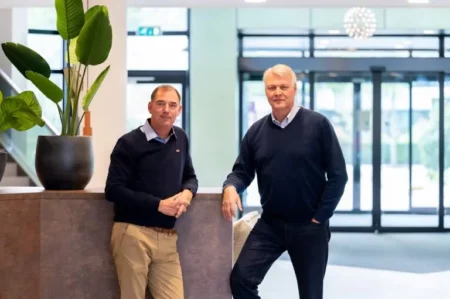Naar schatting hebben 1,7 miljoen inwoners van Nederland nierschade. En minstens de helft van deze mensen weet dat niet. Het meten van de hoeveelheid eiwit in urine is dé manier om te achterhalen of iemand falende nieren heeft. Bij preventieve opsporing van eiwit in de urine kan door medicatie en/of leefstijlaanpassingen verdere achteruitgang van de nieren voorkomen worden, en daarmee onder meer niertransplantaties, dialyses en hart- en vaatziekten.

Bevolkingsonderzoek naar nierfalen
Ondanks de grote groep mensen met nierschade, is er wereldwijd nog nooit een vergelijkbaar bevolkingsonderzoek naar nierfalen gedaan. Tot nu. Een groep deskundigen onder leiding van professor Ron Gansevoort van het UMCG, wil weten of het mogelijk is om een grootschalig bevolkingsonderzoek te doen, en wat de meest effectieve testmethode daarvoor is. Om hier antwoord op te krijgen doen de deskundigen eerst een ‘kleinschalig’ proefbevolkingsonderzoek 15.000 willekeurige mensen in de regio Breda met een leeftijd tussen de 45 en 80 jaar krijgen de test toegestuurd.
Verschillende testmethodes voor deelnemers
Deze 15.000 deelnemers zijn verdeeld over twee groepen, met ieder een eigen testmethode. 7.500 deelnemers ontvangen via de post een urinebuisje. Zij verzamelen daarin urine en sturen dat op naar het Amphia ziekenhuis in Breda
De andere 7.500 deelnemers nemen deel via de thuistestmethode waar men via een thuis ontvangen pakketje (met onder meer instructies om een app te downloaden), zelf de urine test met een teststrip. Daar maken ze een foto van die via de app wordt verstuurd.
De onderzoekers van de NierCheck hebben te maken met veel grote datastromen, het is tenslotte een studie met 15.000 deelnemers. Handmatige verwerking van de informatie in deze datastromen heeft verschillende nadelen. Ten eerste kost het ontzettend veel tijd en geld, terwijl het een ‘proefonderzoek’ is, waarbij beperkte financiële middelen beschikbaar zijn. Ten tweede ontstaat er door handmatige verwerking een verhoogd risico op fouten. Om deze nadelen tegen te gaan is het belangrijk om zoveel mogelijk te automatiseren en datastromen te koppelen.
Efficiënt verwerken van de datastromen
Waarborgen van privacy en persoonlijke gegevens
Zoals eerder benoemd zijn er 15.000 willekeurige deelnemers aan dit onderzoek, die gedurende het onderzoek meerdere brieven ontvangen. De juiste naam en het juiste adres moeten dus op de brief komen te staan.
De privacy van de deelnemers is een belangrijk speerpunt in dit onderzoek. Om dit te waarborgen dienen de onderzoekers te werken in een beveiligde en afgeschermde omgeving, waartoe alleen zijzelf toegang hebben.
De uitdaging is hierbij om na de analyse terug te vinden welk resultaat bij welke deelnemer hoort en daarom is het belangrijk om de persoonlijke gegevens van de deelnemers geautomatiseerd aan de juiste informatie kunnen koppelen.
Een belangrijk onderdeel van de oplossing is het bouwen van een webportal. In deze webportaal staat de gehele workflow duidelijk en overzichtelijk gepresenteerd. Een belangrijk onderdeel van de webportal is het printen van de vele brieven (uitnodigingen, resultaten, vragenlijsten, herinneringen, et cetera) die nodig zijn voor dit onderzoek. Via de webportal valt te zien welke deelnemer zich waar in de workflow bevindt. En dus welke brief er geprint en verzonden moet worden naar deze deelnemer.
Een andere functionaliteit van de webportal is het koppelen van de test aan de deelnemers door barcodescanning. Alle testen en deelnemers hebben een unieke barcode. Scant de onderzoeker de barcode van de testmethode en de barcode van de deelnemer, dan worden de barcodes gekoppeld. Dit is direct terug te zien in de webportal.
Het webportaal werd gebouwd met hulp van het Copernicus integratieplatform Niklas. Hiermee kunnen organisaties eenvoudig en volledig geautomatiseerd elektronisch data uitwisselen. Deze uitwisseling kan bijvoorbeeld zijn tussen interne applicaties, verschillende organisaties (EDI), webshops of clouddiensten. En ook voor de NierCheck komt Niklas uitstekend van pas.
Webportaal koppelt gegevens via barcodes
Zorgapplicatie werkt in afgeschermde omgeving
Het beschermen van de privacy van de deelnemers is ontzettend belangrijk. Dit geldt te allen tijde voor medische gegevens. Daarom moeten de onderzoekers werken in een beveiligde, afgeschermde omgeving. Dit is mogelijk gemaakt door onze partner KPN E-zorg. Zij leveren een veilig en betrouwbaar netwerk dat uitsluitend beschikbaar is voor zorgverleners en aanbieders van zorgapplicaties.
Voor meer oplossingen in de zorg, als Track & Trace, zie ook CoperniCare
Meer weten over onze producten en oplossingen?
Ons team van experts staat klaar om je te adviseren én mee te denken over wat het beste past bij jouw organisatie.
Mail je liever, geen probleem. Vul ons contactformulier in en we nemen snel contact met je op.


